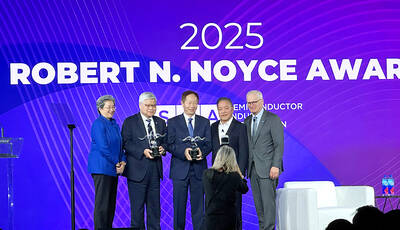Fitch Ratings maintained Taiwan’s long-term sovereign credit rating at “AA” in its latest report on Tuesday, a rating that has remained unchanged since 2021 and reflects Taiwan’s sound fiscal discipline, the Ministry of Finance said yesterday.
In its report, Fitch highlighted several key factors supporting the rating, including Taiwan’s significant net external creditor position, strong fiscal governance and competitive business environment, the ministry said.
Taiwan’s total tax revenue last year outperformed expectations, while government spending remained slightly below budget, resulting in a combined fiscal surplus (including special budgets) equal to 0.4 percent of GDP, the Fitch report said.

Photo: Fang Pin-chao, Taipei Times
For this year, Fitch forecast a marginal fiscal surplus, largely due to “revenue overperformance.”
It also projected a steady decline in the government’s debt-to-GDP ratio to about 27 percent by 2027 from 31 percent last year, “reflecting low deficits and decent economic growth,” the report said.
The ratings agency also lauded Taiwan for keeping public debt well below the ceiling of 50 percent of GDP, which serves as an anchor for maintaining midterm fiscal discipline.
In terms of Taiwan’s net external creditor position, Fitch described “Taiwan’s external balance sheet” as “among the strongest of Fitch-rated peers globally.”
Taiwan had a net external creditor position of 214 percent of GDP as of the end of last year, far higher than the “AA” median of 6.4 percent of GDP, and Fitch projected the country’s current account surplus to be about 15 percent of GDP from this year to 2027.
However, those numbers have hurt it in negotiating “reciprocal” tariff rates with the US, which has objected to Taiwan’s large trade surpluses — a key component of current account surpluses.
Although Fitch’s report on Taiwan’s fiscal position was positive, it pointed to the US tariffs as a potential impediment to growth.
“Growth forecasts for the second half of 2025 face large uncertainty, including the effect of US tariffs. These are currently set at zero for semiconductors, but are subject to a review under a Section 232 investigation by the US, while the ‘reciprocal’ rate is 20 percent,” the report said.
“Additional risks include a slowdown for key trading partners, reduced global AI [artificial intelligence] demand and geopolitical tensions. Medium-term growth prospects face headwinds from an aging population,” it said.

Shiina Ito has had fewer Chinese customers at her Tokyo jewelry shop since Beijing issued a travel warning in the wake of a diplomatic spat, but she said she was not concerned. A souring of Tokyo-Beijing relations this month, following remarks by Japanese Prime Minister Sanae Takaichi about Taiwan, has fueled concerns about the impact on the ritzy boutiques, noodle joints and hotels where holidaymakers spend their cash. However, businesses in Tokyo largely shrugged off any anxiety. “Since there are fewer Chinese customers, it’s become a bit easier for Japanese shoppers to visit, so our sales haven’t really dropped,” Ito

The number of Taiwanese working in the US rose to a record high of 137,000 last year, driven largely by Taiwan Semiconductor Manufacturing Co’s (TSMC, 台積電) rapid overseas expansion, according to government data released yesterday. A total of 666,000 Taiwanese nationals were employed abroad last year, an increase of 45,000 from 2023 and the highest level since the COVID-19 pandemic, data from the Directorate-General of Budget, Accounting and Statistics (DGBAS) showed. Overseas employment had steadily increased between 2009 and 2019, peaking at 739,000, before plunging to 319,000 in 2021 amid US-China trade tensions, global supply chain shifts, reshoring by Taiwanese companies and

Taiwan Semiconductor Manufacturing Co (TSMC) Chairman C.C. Wei (魏哲家) and the company’s former chairman, Mark Liu (劉德音), both received the Robert N. Noyce Award -- the semiconductor industry’s highest honor -- in San Jose, California, on Thursday (local time). Speaking at the award event, Liu, who retired last year, expressed gratitude to his wife, his dissertation advisor at the University of California, Berkeley, his supervisors at AT&T Bell Laboratories -- where he worked on optical fiber communication systems before joining TSMC, TSMC partners, and industry colleagues. Liu said that working alongside TSMC

TECHNOLOGY DAY: The Taiwanese firm is also setting up a joint venture with Alphabet Inc on robots and plans to establish a firm in Japan to produce Model A EVs Manufacturing giant Hon Hai Precision Industry Co (鴻海精密) yesterday announced a collaboration with ChatGPT developer OpenAI to build next-generation artificial intelligence (AI) infrastructure and strengthen its local supply chain in the US to accelerate the deployment of advanced AI systems. Building such an infrastructure in the US is crucial for strengthening local supply chains and supporting the US in maintaining its leading position in the AI domain, Hon Hai said in a statement. Through the collaboration, OpenAI would share its insights into emerging hardware needs in the AI industry with Hon Hai to support the company’s design and development work, as well